INTRODUCTION
Hypotension is the medical term for low blood pressure (less than 90/60) with no symptoms. Having a naturally low blood pressure (normally thought of as being lower than 90/60 mmHg) is unlikely to mean there is anything wrong with you. It may be normal for you and in fact is beneficial in many ways, as it can reduce your chance of getting diseases such as coronary heart disease and stroke.
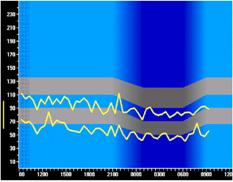
YOGA AND HYPOTENSION
The benefits that come into your life through Yoga are so rewarding that once you start it is virtually impossible to stop. You feel better, look better, your skin is different, your diet changes and your outlook changes. Your heart starts to open and your attitude becomes more flexible and tolerant. Yoga is the key to opening up what is truly underneath.
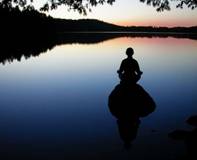
YOGA POSES FOR HYPOTENSION
Bharadvaja's Twist Pose
This gentle twist is a tonic for the spine and the abdominal organs.
Camel PoseThe ushtra-asana is a powerful posture for stretching the spine, back muscles, shoulders and arms. It is best to practice it later in your asana routine after most of the muscles are limber and and you have worked the back and shoulders
Extended side angle Pose
This pose strengthens and stretches the legs, groins, hamstrings. Opens the chest and shoulders. Stretch along the top side of the body, from the back heel through the raised arm.
Fish Pose
The fish pose is the natural successor of the shoulder stand and should be used as a counter pose to the stand. There are several benefits of this pose. It helps expand the chest cavity, allowing the lungs to take in more air and to become more accustomed to deep breathing techniques. It also strengthens the neck muscles, makes the nerves more responsive and increases spinal flexibility.
Half frog Pose
The half frog pose in Svaroopa Yoga is a sacral opening pose that relieves low back pain. It works to stretch the front of the legs and the front of the body while strengthening the arms and shoulders. The frog pose is an intermediate to advanced pose and is often a challenge for beginners, but a bolster can help as you gain the strength and flexibility you need.
King Pigeon Pose
Invigorates your body and gives your spirits a lift. An extremely deep backbend appropriate for advanced Practitioners only. .
Marichi Pose
Marichi Pose or Marichyasana is a twist sitting pose. The pose purifies the body by wringing toxins out of the internal organs. This pose is also called Sage�s Pose. It helps with asthma, fatigue and digestive problems, along with working the spine, hips, abs, and lower back muscles.
One-Legged King Pigeon Pose II
Nowadays we simply shoo pigeons away from our public gathering places. But in Vedic times, 3,000 years ago, the pigeon was a bird of ill omen, the messenger of the goddess Nirriti, a personification of misfortune, misery, and death. The One-Legged King Pigeon II, or Eka Pada Rajakapotasana II in Sanskrit, is one of the more intermediate back bends in yoga as it requires a certain amount of flexibility to get into the posture. While the pose does a great deal to stretch the thighs, it�s also good for the chest and back. If you want to sequence the One-Legged King Pigeon II into your routine, try using it before the Cobra, Bow or Hero.
Tree Pose
The Tree Pose helps strengthen your thighs, calves, ankles and back. It can also increase the flexibility of your hips and groin. Your balance and concentration can also be improved with constant practice.
YOGA ASANAS FOR HYPOTENSION
UTTANASANA
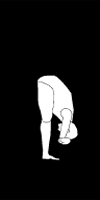
Uttanasana (forward bend) is a hatha yoga posture, one of the most 'popular', utilized in most hatha yoga classes. Uttanasana is the basic standing forward bend. It is a pose that brings about intense extension to your legs and spine. Your hamstrings will wake up and your mind will be soothed. Uttanasana is sometimes done between standing poses because of its recuperative benefits. It is a critical piece of Surya Namaskar, sun salutation sequences done in vinyasa and other styles of yoga. Vinyasa styles of yoga are sequences of poses performed one after another and linked in a dynamic flow by breath.
Steps
• Stand straight on the yoga mat.
• Inhale & raise hands above head palms facing to forward.
• Exhale & slowly bend forward try to touch toes or else you can touch the floor or to leg.
• Slowly you will be more comfortable in this asana /pose.
• Do not bend knees & try to keep neck relaxed.
• Maintain the pose & breathe normally.
• Inhale & return to original pose.
SARVANGASANA
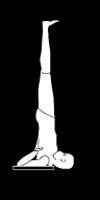
The Sarvanga Asana is one of the most treasured asanas, said to benefit the whole body. In this asana the whole body weight rests on the shoulders and the neck and upper back regions are stretched to the limit. Beginners should practice the sarvanga asana in a moderate way and gradually attempt the full posture.
Steps
• Lie straight, on your back on the floor. Palms should be on the floor close to the body and the heels and the toes should be together.
• Inhale and raise both the legs slowly up in a vertical position (at 90o). Rising of the legs should be synchronized with the breathing.
• Exhale and again raise the legs upward from the second position. Bring both palms underneath the hips and should be used to assist in raising the body upwards. The hands should always work as a support to the body weight.
• Try to raise the body as straight as possible.
• At the final stage of this asana you will be resting on your shoulders, chin touching the chest. In this position the legs should be stiff hard and together and the toes is pointing towards the ceiling. Do not shake. Be firm and keep breathing normally.
• Remain in this position for about 30 seconds on the first day.
• For returning to the first position, first fold the legs on the knees. Your heels should be now on the thighs and above the buttock. Then slowly let the body return to the floor while the palms are supporting the body weight.
• Now stretch out the legs forwards and relax. You have completed one round of the Sarvanga Asana.
PAVANMUKTASANA
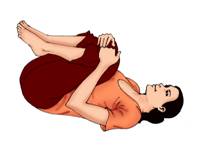
Pavan Muktasana strengthens the abdominal muscles and liver, spleen, pancreas and stomach. It eases excess gas from the abdomen. Persons suffering from constipation must do this after drinking lukewarm water for proper evacuation of bowels in the morning. Pavan Muktasana is the best asana to expel gas by compression of the abdomen.
Steps
• Keep your hands by the side of your body in a supine position. While inhaling, raise both your legs to 90 and bend them at the knees.
• Make a finger-lock with both your hands around them, a little below the knees. While exhaling, bring your thighs close to the chest by contracting the abdominal muscles. Maintain this posture for a few seconds.
• Then return to the original posture in the reverse order as Ardha Pavan Muktasana. Repeat the asana three to four times.
BHUJANGASANA
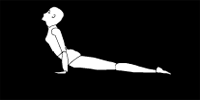
Bhujangasana does wonders to the spine and flexes it; it improves the blood flow in the back and strengthens the nervous of the spinal cord. In addition it solves problems in the reproduction organs, improves the functions of the liver and spleen. The external and internal muscles of the abdomen become stronger and the functions of the digestive system improve. This posture help in preventing gas, constipation, stomach aches, and strengthens the function of the kidney. The asana affects the ajna chakara � the energy center between the eyebrows that is responsible for the mental functions.
Steps
• Lie on the abdomen on the floor.
• Bend elbows and bring hands close to the shoulder with palms placed on the floor.
• Inhale and raise hand, neck, chest & upper abdomen off the floor.
• Keep remaining part of the body on the floor.
• While doing this keep, hips, thighs, keens firm.
• Extend the neck fully & pull the shoulders backward.
• Maintain the pose & breathe normally
• Exhale & return to original pose.
PASCHIMOTTANASANA
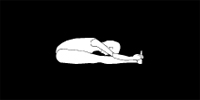
Paschimottanasana is a fine stretching exercise of the body. In one continuous movement, almost all the posterior muscles get fully stretched and relaxed. This helps to improve the functions of the abdominal organs and sets right respiratory disorders. It also helps to improve memory.
Steps
• This posture involves stretching of the posterior muscles of the body.
• While sitting, stretch your legs forward and keep them close to each other. Bend a little forward, make hooks of your fingers and hold the big toes on the respective sides.
• While exhaling, bend forward stretching the trunk along the thighs. Rest your on the knees, which should be kept straight.
• Gradually, the tense muscles can be made supple for securing the complete posture. Inhale and return to the original position
ASTROLOGY
Astrology does not seek to encroach upon the domain of medical persons; it certainly does not lie that diseases are inevitable as per astrological findings. But to be forewarned is to be forearmed. There are potential weak spots in each one�s constitutions and by working on improving that, we stand the chance of leading a healthier life without health complaints. According to astrological reports for yoga asanas the above mentioned asanas are said to be effective for those who come under the following zodiac sign
• TAURUS
• LEO
• PISCES